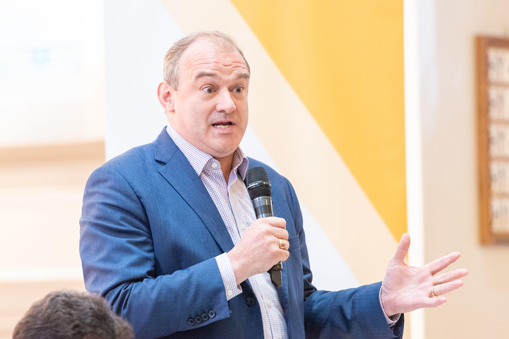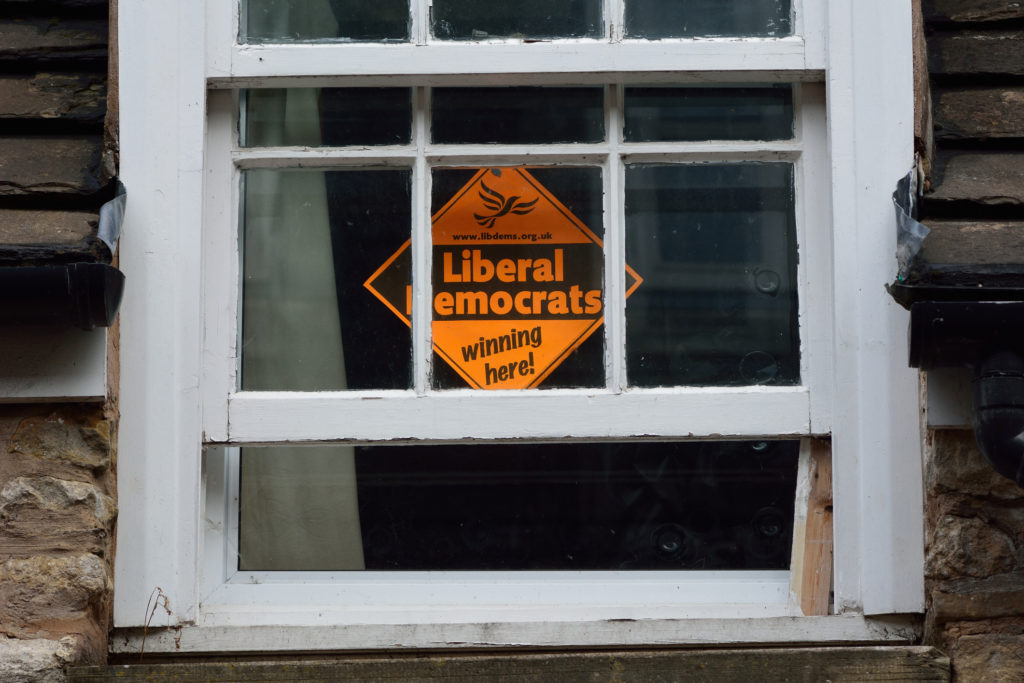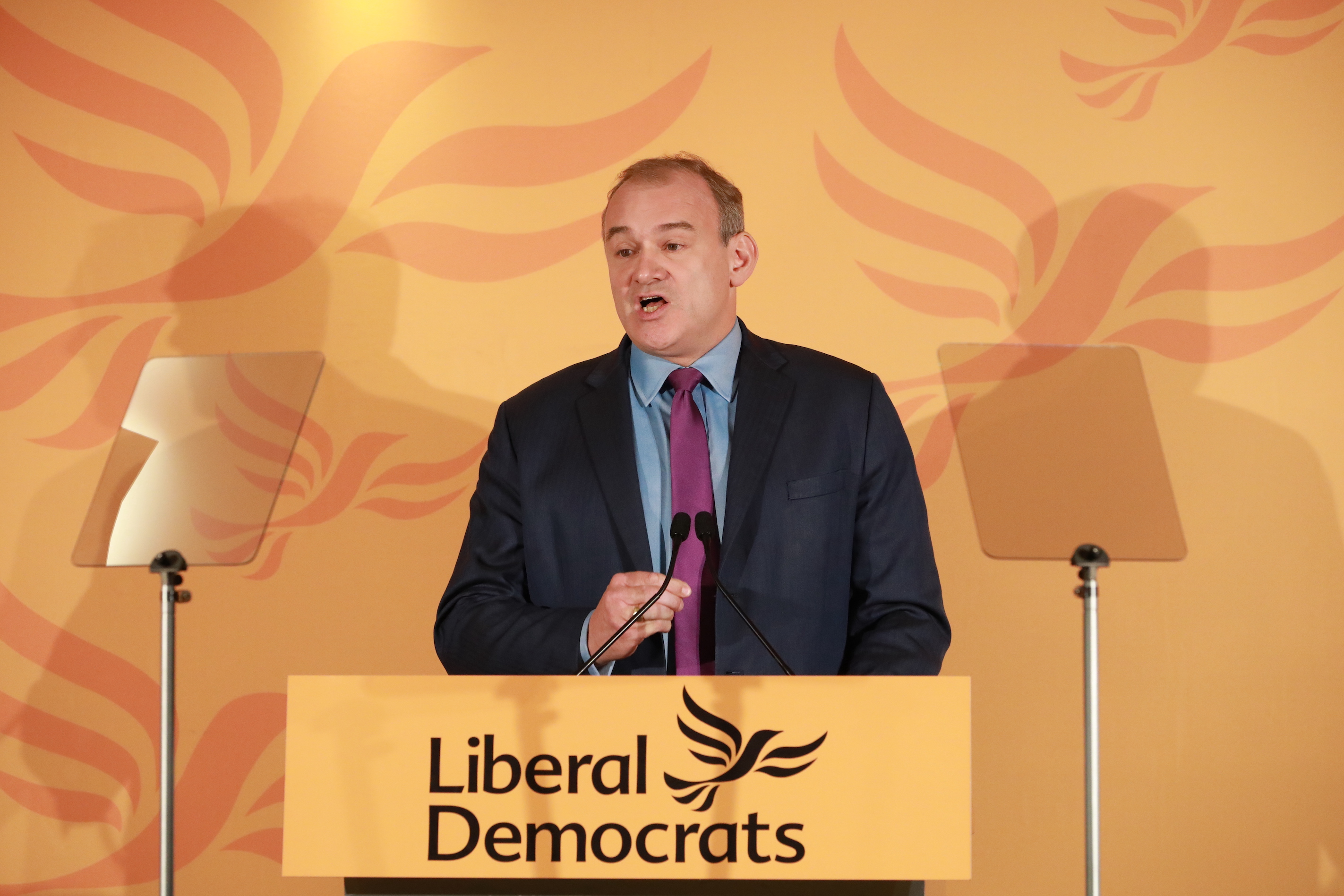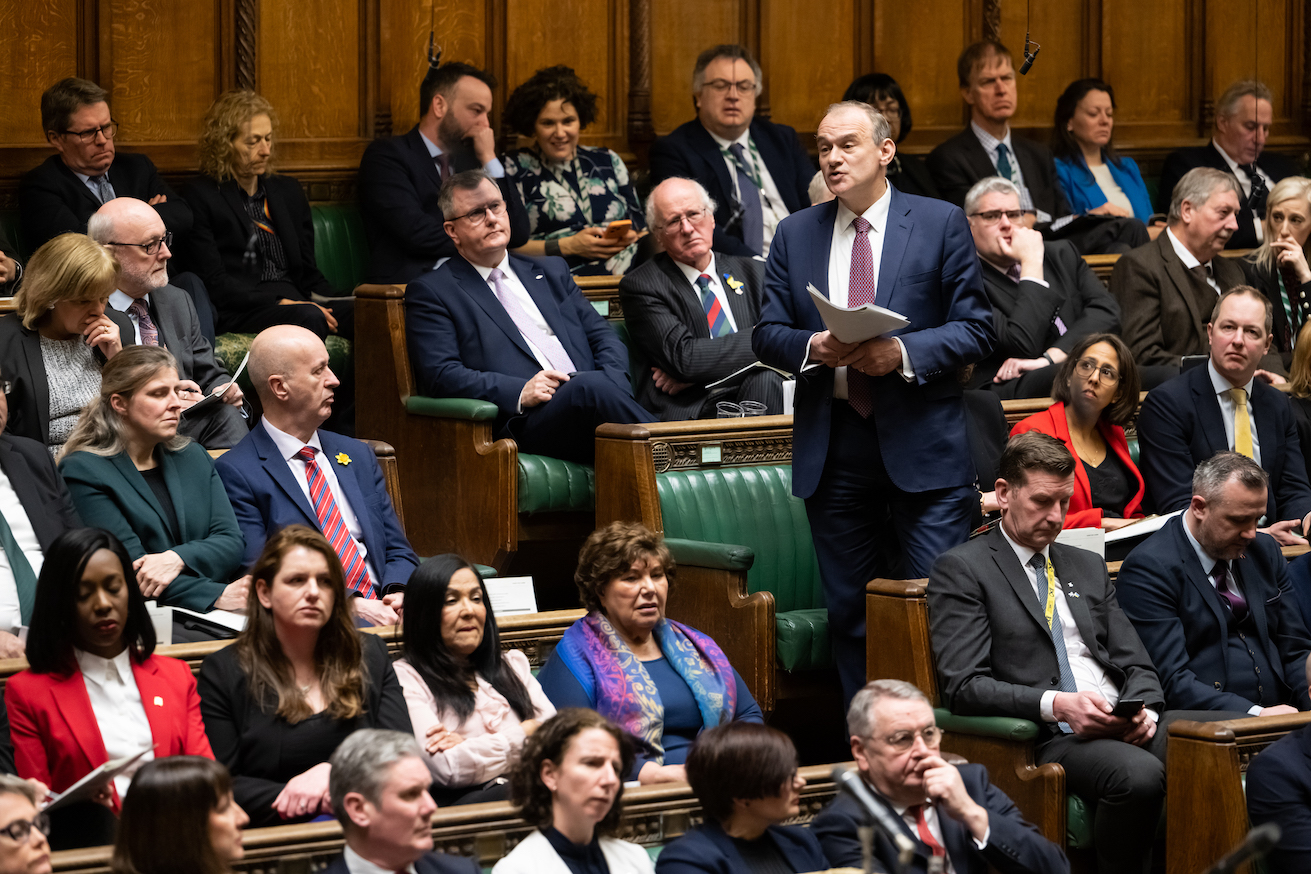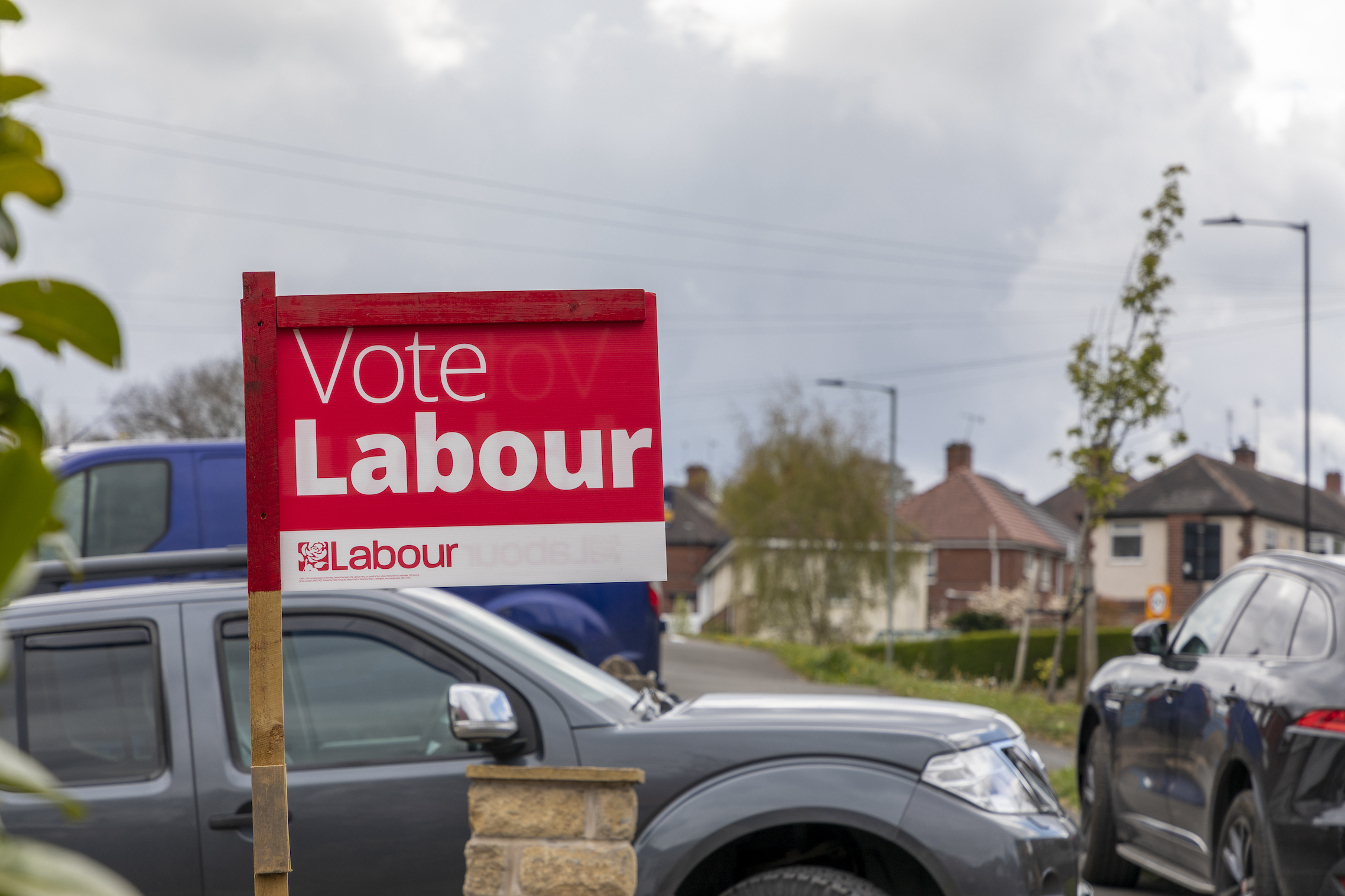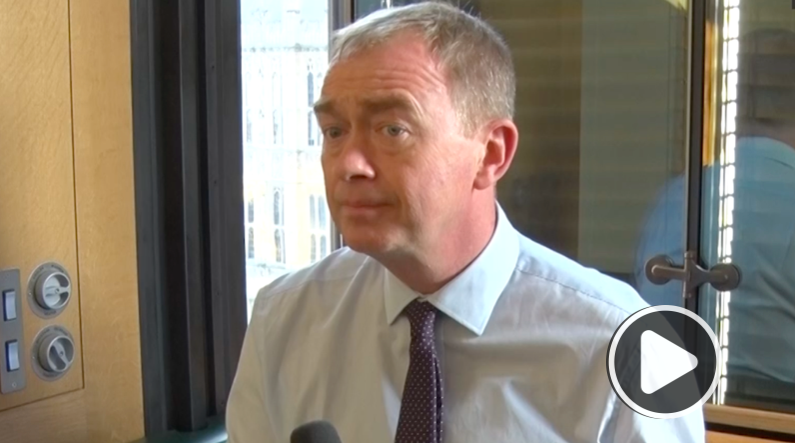The Liberal Democrats are a centre-left, pro-European, political party, colloquially referred to as the Lib Dems.
In January 2022, there were 13 Lib Dem MPs, 11 who were elected in the 2019 general election, and a further 2 elected in the 2021 North Shropshire and Chesham and Amersham by-elections
In 2021 the Liberal Democrats had 89 peers in the House of Lords.There are approximately 2,600 Lib Dem councillors across Britain.
In 2022 the Liberal Democrats were polling around 11% in the national opinion polls.
Leader of the Liberal Democrats
The Liberal Democrat Party is currently led by Sir Ed Davey MP. Sir Ed was elected in 2020. An MP from south west London, Sir Ed previously served in the Cabinet during the Conservative and Liberal Democrat coalition government.
Candidates for the Lib Dem leadership must be an MP and secure the nomination of at least one other MP, as well as 200 supporters from at least 20 local parties. Lib leadership elections use the Single Transferable Vote system.
If the serving Lib Dem Leader dies, resigns or loses their Parliamentary seat, the Deputy Leader or another senior figure takes over as acting leader until an election can be held. The most recent Liberal Democrat leadership election took place in August 2020, as a consequence of the previous leader, Jo Swinson, losing her seat at the 2019 General Election. Ed Davey was elected to succeed Swinson with 63.5% of the vote.
What do Liberal Democrats stand for?
The Liberal Democrat constitution states that ‘the Liberal Democrats exist to build and safeguard a fair, free and open society, in which we seek to balance the fundamental values of liberty, equality and community, and in which no one shall be enslaved by poverty, ignorance or conformity.’
Current Liberal Democrat policy frames the pursuit of a fairer society as requiring a range of social reforms such as wealth redistribution, increased funding to public services and improved housing. The Party also supports civil liberties and opposes government impositions on privacy.
The Liberal Democrats, like other small parties in the UK, believe in the necessity of electoral reform. The Lib Dems also support a decentralised federal system in which the regions of England have more autonomy. The Party has constantly backed the devolution of power to Scotland, but does not support a second referendum on Scottish independence (IndyRef2).
In terms of economic policy, the Liberal Democrats stand for higher government investment in infrastructure and research, as well as national hyper fast broadband.
The Lib Dems believe in a reformed educational system that makes higher education more accessible and reduces standardised testing. The Liberal Democrats have advocated for stronger action to defend the environment and reduce carbon emissions. They also support the legalisation of cannabis.
The Liberal Democrats previously strongly opposed Britain’s exit from the European Union, and have argued for increased international cooperation and a more open immigration policy.
Liberal Democrat Party Voters
In the 2019 General Election, the Liberal Democrats received their highest share of the vote from 30-39-year-olds, with support tapering off both among younger and older voters.
Men are slightly more likely to vote Lib Democrat than women, with this difference being greater among the younger age brackets.
There is a distinct difference in the Lib Dem vote share between classes: the higher one’s attributed social class, the more likely someone is to vote Liberal Democrat.
The Lib Dems also receive more votes from those who are classified as being highly educated, with the Party securing 17% of the vote amongst University graduates. The Lib Dems are far far less popular among those with fewer academic qualifications.
Liberal Democrat Party Membership
The Liberal Democrat Party possessed around 115,000 members as of August 2019. This level was approximately two thirds of the level of the Conservative Party, but only a quarter of that of the Labour Party.
The Recent Rise and Fall of the Liberal Democrats
In the early part of the Twenty First Century, the Liberal Democrats accounted for just under a tenth of the seats in the British House of Commons, winning 52 MPs in 2001, 62 MPs in 2005, and 57 MPs in 2010. During this period, the Party steadily increased its share of the popular vote, peaking at 23.0% in 2010. In the 2003 local elections, the party polled 30% of the vote, a party record.
During this period, the rise in support for the Liberal Democrats was heavily influenced by the Party’s opposition to the then Labour government’s decision to join the Iraq War. Between 1999 and 2007, the Liberal Democrats were also part of a coalition government with the Labour Party in the Scottish Parliament.
When Nick Clegg was elected Liberal Democrat Leader in 2007 he pledged to treble the number of Lib Dem MPs in the Commons. During the 2010 General Election campaign, Clegg appeared on an equal footing with the Conservative and Labour leaders during three televised campaign debates, and he emerged as the clear winner. The Lib Dems ratings in the polls rocketed upwards to above 30%, pushing Labour briefly into third place and suggesting the Lib Dems were within a few points of the Conservatives. This was briefly dubbed as ‘Cleggmania’.
Polling day in 2010 election, however, did not see voters reflect the enthusiasm for the Lib Dems that had been briefly been shown in pre election opinion polls. Rather than increase, the party’s number of MPs actually fell from 62 to 57.
However, Clegg’s relevance was not diminished. With David Cameron’s Conservatives failing to gain an overall majority, Clegg took the Liberal Democrats into a coalition government with the Conservative Party. In 2010, Clegg became Deputy Prime Minister, and the Lib Dems obtained four Secretaries of State at Cabinet level, and a number of other junior ministers scattered throughout Whitehall.
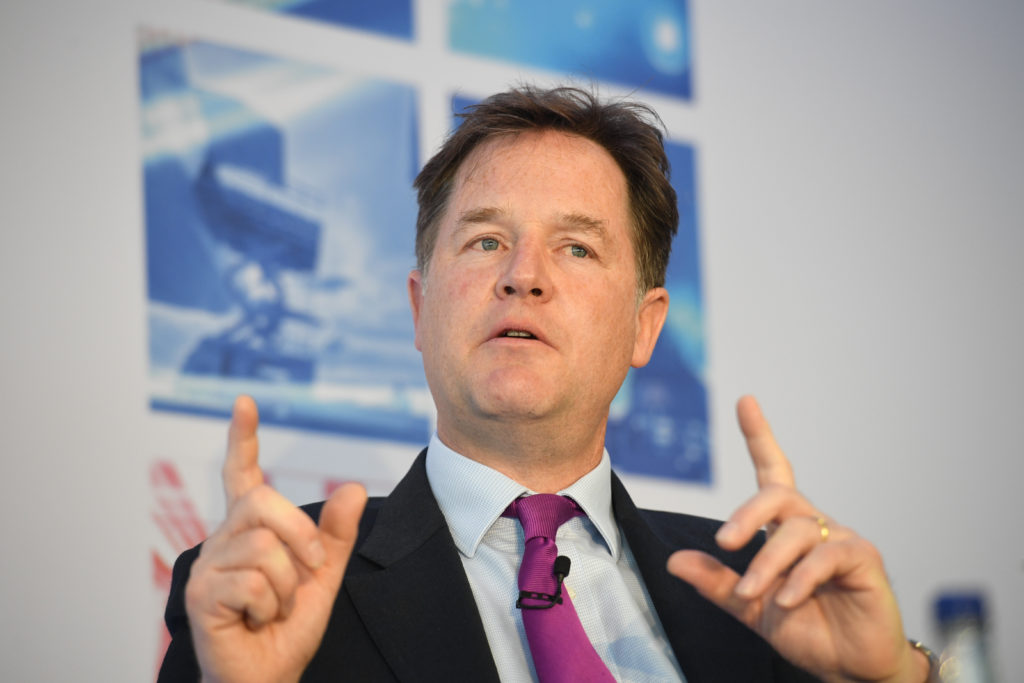
“I agree with Nick” was briefly a 2010 Election catchphrase
During their time in government, the Liberal Democrats’ popularity began to wane. The Party was quickly seen to break a previous political pledge in relation to the raising of tuition fees, and in the 2011 local elections the Party lost a third of its Lib Dem Councillors alongside 9 of the 19 councils that the party had previously controlled.
On the same day, the public also ejected a proposal for electoral reform (the Lib Dem’s flagship policy) in a national referendum, indeed doing so by a convincing majority of two to one. The party’s demise was complete at the 2015 General Election, when the Lib Dems lost 49 of their 57 seats, and their vote share collapsed to just 8%.
After the 2016 referendum on Britain’s membership of the European Union, the Liberal Democrats strived to rebuild by aligning themselves with calls for a second Brexit referendum. This led to the Lib Dems winning 19% of the vote in that year’s 2019 European Parliament elections. The Party’s then leader, Jo Swinson, briefly positioned herself as a candidate for Prime Minister. However when the General Election came later that year, little had changed. The party won just 9 seats and secured only 11.6% of the vote.
Origins of the Liberal Democrats
The Liberal Democrats trace their political roots back to the Whigs, the Tories’ main opponents from the end of the 17th century until the mid-19th century.
In 1859, the Whigs joined the Radicals and the Peelites, and this led to the foundation of the Liberal Party. In the early years of the 20th century, the Liberals were the dominant force in British politics, being in government continuously from 1905 until 1922. Subsequently replaced by the Labour Party as Britain’s main left of centre political force, the Liberals achieved only minimal representation in the Commons after the Second World War.
In 1988, the Liberal Party had been in decline for decades. Having won no more than six House of Commons seats since 1950, a decision was made to merge the Party with the Social Democratic Party (SDP). The SDP itself having previously been established in 1981 by a breakaway group of moderate centre left Labour MPs. This alliance birthed the Liberal Democrats, a new party meant to represent the centre of the political spectrum alongside traditional liberal values.
Liberal Democrat Party Funding
Like other political parties represented in Westminster, the Liberal Democrats are funded through a combination of public grants, donations, and membership fees.
In the year 2015-16, the Liberal Democrats received a Policy Development Grant of £359,478 according to the Electoral Commission. In 2014-15, they received £70,528 in Short Money, a yearly grant for opposition parties, according to figures from the House of Commons’ Department of HR and Change.
During the 2019 election period, the Liberal Democrats received a total of £1.3 million in registered donations, mostly from individuals. This made up 4.1% of the total registered donations to parties at that time.
Liberal Democrat membership fees start at £1 a month, with a rate of 50p for people who receive state benefits.
Liberal Democrat Party Organisation
The Party’s central organisation is made up of a number of committees.
The Federal Board, Federal Policy Committee and Federal Conference Committee are the Liberal Democrat Party’s main decision-making bodies. All are elected by the party’s membership.
In addition a number of other prominent committees regulate different aspects of party activity: the Federal Finance and Resource Committee, the Federal Communications and Elections Committee, the Federal People Development Committee, the Federal International Relations Committee and the Federal Audit and Scrutiny Committee.
As well as the federal organisation detailed above, there are also Lib Dem parties for England, Scotland, and Wales.
The Liberal Democrat Headquarters are located at 8-10 Great George Street in London.
Contact Details
Website: www.libdems.org.uk
Twitter: @LibDems


